|
7th January 2020 It's the first Tuesday of the year and we're NOT at 'The Sovereigns' (Which is closed for refitting.), instead we're at 'The Wheatsheaf' in Woking for board gaming. Tonight, we're playing Taverns of Tief....err? Taverns of Tiefe... err? It's a game where you run a pub! So this game tries it's best squeeze in as many game mechanics as it can. Deck building - yep. Card drafting - yep. Dice drafting - yep. Dice placement - yep. Resource management - yep. Hidden Role - y... wait no, that's about the only thing missing! What's in a game? So Taverns of Tiefenthal comes with some optional extras or expansions, apparently we used all of them in the game we played. So there's a lot of components.
Many of the game's components are made of nice and thick card stock, including the beer mats. The artwork is quite nice and colour and there's some nice detail on the tavern board and tiles. How's it play? We begin with setup.
That covers most of the setup. Now to explain what does what. Let's start with the tavern board. Many of the abilities on the board are activated by placing dice of a specific value on them.
Guest cards are acquired by spending beer.
So at last, finally, we get to how the game plays. Each round is player over several phases.
Endgame Play continues for 8 rounds. Victory points are scored from the cards that players bought Points are tallied, highest score wins. Overall
Taverns of Tiefenthal requires a lot of explanation (As you can see above), but in play is actually quite straightforward. It's more of a game about optimizing strategies than complex rules. The game gives you a lot of choices and options. Occasionally these will be meaningless decisions because of how the dice fall, but most of the time you'll have to choose between different actions. A player will nearly always have more options available than actions to perform them. This is makes a good game in my opinion. There's nothing particularly unique about the game, other than how it blends certain game mechanics together to emulate it's subject quite well. The game's presentation is also very good with well made components and colourful and well produced art. The game's only drawback is its setup time, there's quite a lot to do. But I think the payoff is worth it as I enjoyed it.
0 Comments
5th January 2020 Sunday gaming at 'The Sovereigns' in Woking continues. For the first time in almost exactly 3 months all 6 of us are in the same room at the same time. So on with 50 Fathoms. Location: Baltimus. Our 3rd ship, 'The Herodica' has been repaired and is now seaworthy. Foolishly, the party have decided to make Jacob the captain of The Herodica. Doesn't anyone know that Jacob can't sail or even swim! We discuss our next move and decide to head to the 'Kehuna Flumes' and set off. During our journey, we spot a convoy of ships flying the Baltimus flag. We approach the convoy, they in turn fire their cannons at us and warn us off. We hold back and query them. They provide us with no useful information and threaten us again. We decide it isn't worth the trouble and sail away. As we approach Kehuna Flumes, we start to notice sea creatures that we don't usually see in waters and the air seems warmer than expected? Then we see 'the flumes'. They mostly have the appearance of a vertical stack of rock. Some of the flumes are like chimneys and rise above the sea level, most however are under water. 'The Kehuna' are a tribal people and are very protective of the region as it lush in 'mineral' resources. In fact we see minerals being spat out of a chimney whilst we are there. We then noticed 3 elongated bodies swimming in the water around us. They realised that they are 'long' eels. Giant eels that produce electricity, it is wise not to strike them, so we moved to a newer spot. Since we were at the Flumes to collect Kehuna gold, we looked around for a good spot too collect some 'minerals'.
Rackham and Wind dive down and begin their search. They manage to find 8 ounces of gold before we decided to move on. It was wise to avoid any local Kehuna. We moved to a new spot and Rackham dived down again. Rackham acquires some 'guard sharks' in case he encounters any trouble. After some effort, he manages to 'mine' some more gold. Now that we have enough for our purposes, Rackham resurfaces and we prepare to move on. 5th January 2020
It's a Sunday at 'The Sovereigns' in Woking. 50 Fathoms is no longer on hiatus, but one individual is running late (You know who you are!). So in the interim we played a game of 'Death On The Cards'. You can read my blog about it here. 4th January 2020
It's still Saturday night and we're still round Matakishi's for gaming fun. Our final game of the night was 'Century: Eastern Wonders'. Read my blog about it here. 4th January 2020
It's a Saturday evening and we're at Matakishi's for games night. It's the first Saturday of the year and the first gaming session of the year too! We began with 'Death On The Cards'. Read my blog about it here. So we've said our goodbyes to 2019. I've played lots of games and written plenty of blogs. So below is summary of my gaming according to my quick calculations. Number of different games played: 77. Total number of gaming sessions: 171. Games I played the most in 2019:
So Port Royal came top and a worthy game it is too. I'm not sure if Machi Koro Legacy should count? We did play it 10 times, but that's only once through the 'legacy mode', well there it is. I've also decided to keep separate from standard Machi Koro. Because I'm obviously very important, my opinion is equally important. So without further ado... My game of the year: Wingspan. A game that has some depth but is also accessible with a reasonable play length and interesting subject matter. It doesn't hurt that it has high quality production values and component. When all are combined, it makes Wingspan a great experience. My worst game of the year: Hit Z Road. This game is equal parts fantastic production values and fantastically broken auction mechanics, so bad that it kills the game stone dead in my opinion. My initial urge is to say. "Did anyone play test this?". But I know they. Which means that the awful auctions must be there for some confounding reason. I just can't fathom why? Surprise of the year: Heckmeck/Pickomino. When this little game came along, I was instantly impressed. A push your luck dice game that frequently gives players tricky decisions to make. It proved popular with pretty much everyone I play games with. That I only bought the game in late October and it made it into my top 5 is proof. Big fun in a small package. RPGsThese are the RPGs I played/ran in 2019. Different RPGs: 7. RPG Sessions: 51. 50 Fathoms/Savage Worlds: 17 Sessions. Oubilette/Black Hack: 11. Cthulhu Hack: 5 Sessions. WFRP (Ran): 8. Surrendered Lands/D&D (Ran): 6. Agon d6: 4. Isis & the Seven Serpents/Fate: 1. So that was my 2019 in gaming.
Let's see what 2020 holds? 28th December 2019
It's Saturday evening and I'm now at Matakishi's for more board gaming goodness. For the final game of 2019 we played 'Irish Gauge'. My blog for it is here. 28th December 2019
Saturday lunchtime at 'The Sovereigns' in Woking. 50 Fathoms continues to be on hiatus, so we play board games instead. We played 'Grand Austria Hotel'. Read my blog about it here. 22nd December 2019
Gaming at 'The Sovereigns' continues. The final game of the day and the last game before Christmas was Wayfinders. See my blog about it here. 22nd December 2019 Sunday is here at 'The Sovereigns' in Woking. 50 Fathoms is still on hiatus so for the final get together before Christmas we're playing board games. The first game was 'Agatha Christie's Death On The Cards'. Will the other players learn your darkest secrets? Will you catch the murderer? Or will you manage to get away with murder! Only the cards can decide in... Death On The Cards! What's in a game? Death On The Cards uses 3 different types of cards. Secret cards, game cards and the 'Murderer Escapes!' card , game cards are further divided into other cards:
How's it play? First there's setup, which is a little different depending on the number of players.
Social disgrace What's social disgrace? When a player has all of their secret cards turned face-up, all of their secrets have been revealed and they're disgraced. What does this mean? It means that when they become the active player, all they can do is discard exactly 1 card and draw 1 card. It is possible to come back from social disgrace as there some cards that allow secret cards to be turned back face-down. Endgame How the game ends will depend on the player's role in the game.
Overall
'Death On The Cards' plays with 2-6 people and what's interesting is how the game changes depending on the number of players. With 2 players, there's no secret to who's the murderer. The game is a war of attrition. Now, for some maths (Hopefully my maths is correct.). Let's look at it with 3 players.
Now lets look at a 6 player game.
This means it becomes easier for the murderer to get away with it in bigger game. Now I don't see this as a flaw, but it is definitely something that changes the dynamics of the game. With 3 players for example, 'Death On The Cards' can be played as a straightforward card game. With 6 players, it's much harder to capture the murderer. Players will need to form alliances and target suspicious players as quickly as possible. But then, this gives the murderer and accomplice opportunities to bluff, lie, double cross and sabotage their 'allies'. It becomes a lot more like a hidden role game. Anyway, regardless of the mathematics, the game mechanics fit the theme very well. 'Death On The Cards' can learned quickly and plays quickly too . It's a great filler game and even though I'm not a fan of hidden role games, it's a lot of fun. It's definitely worth giving it a try. |
AuthorI play, I paint. Archives
March 2024
Categories
All
|

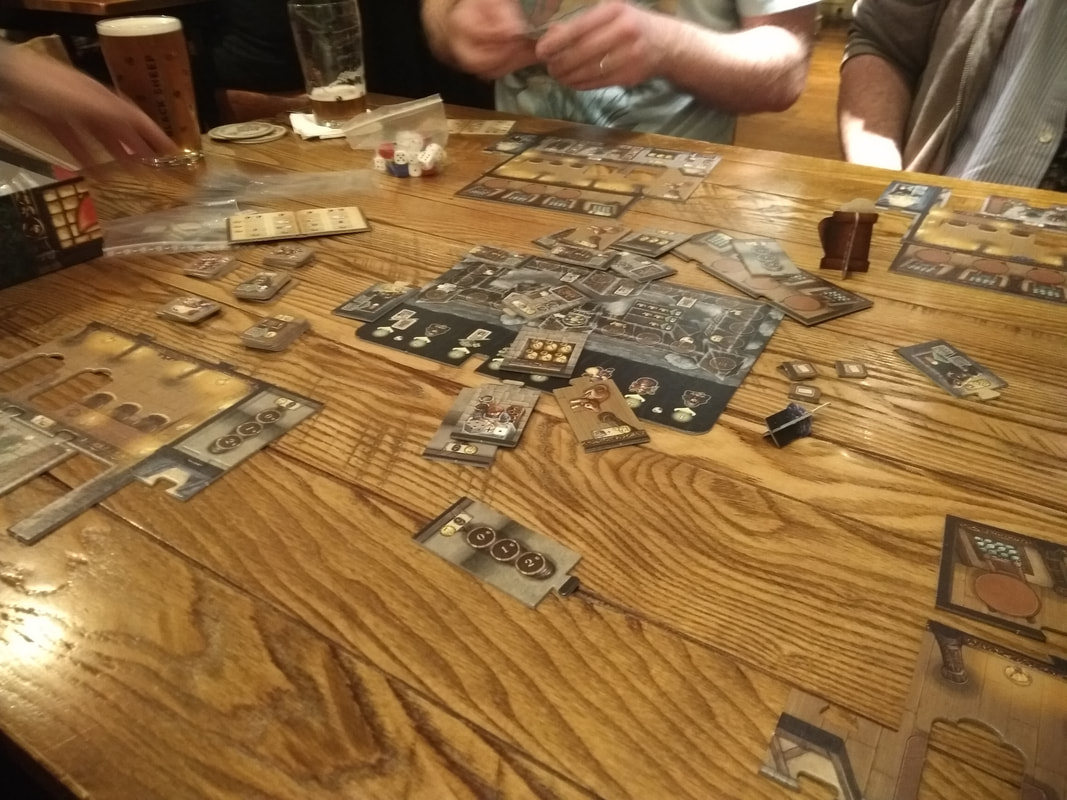
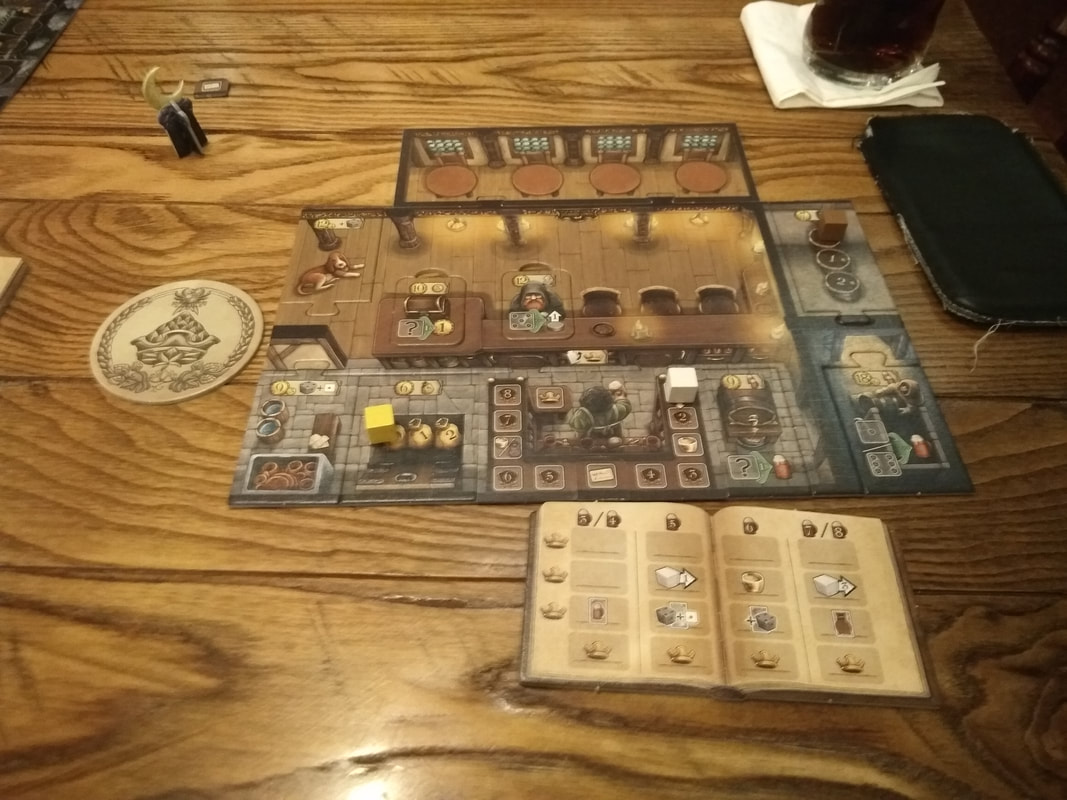
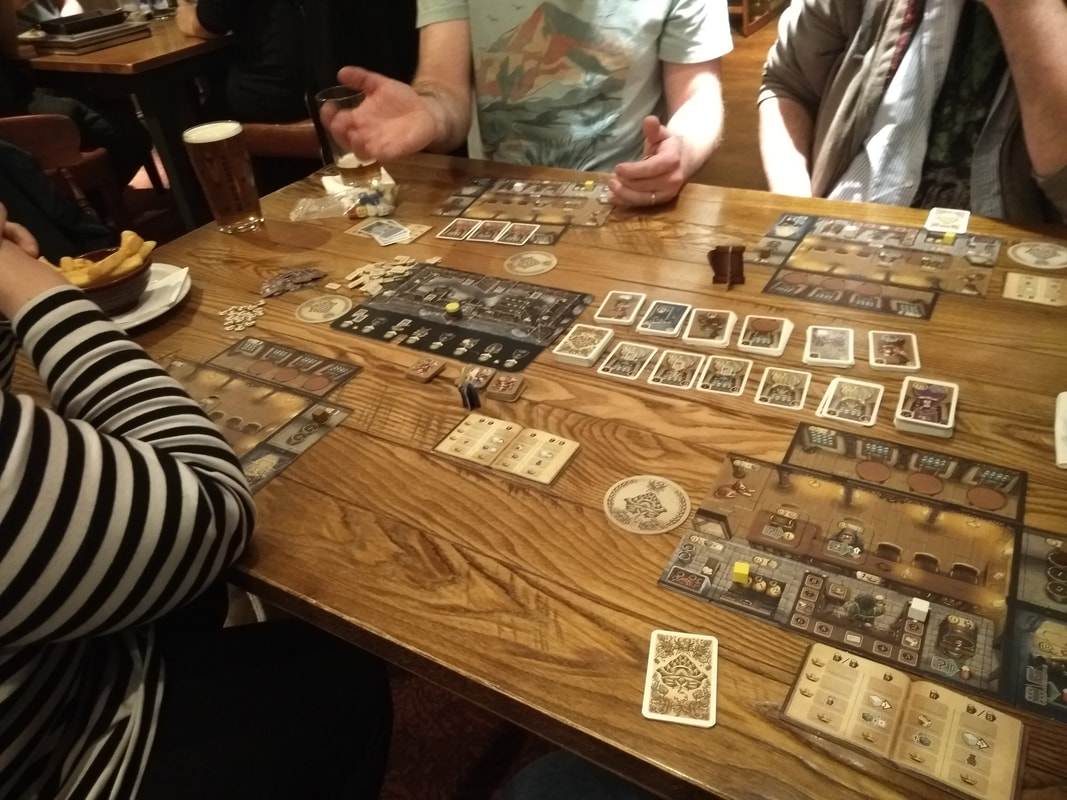
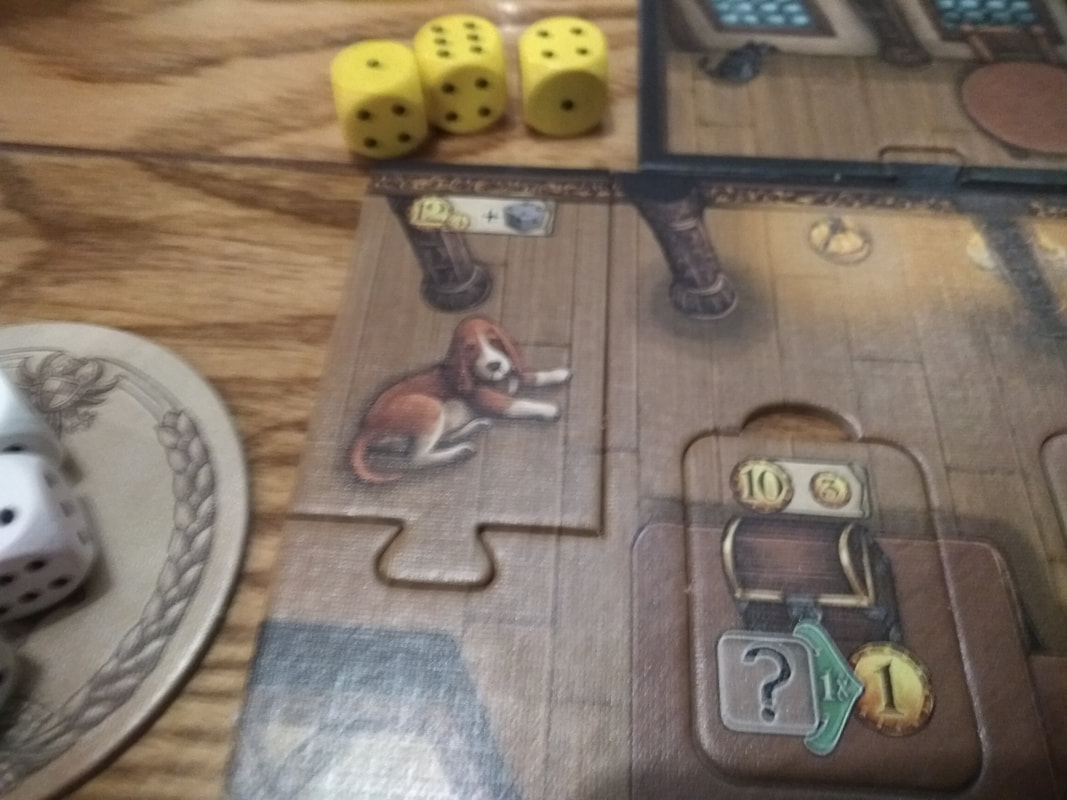
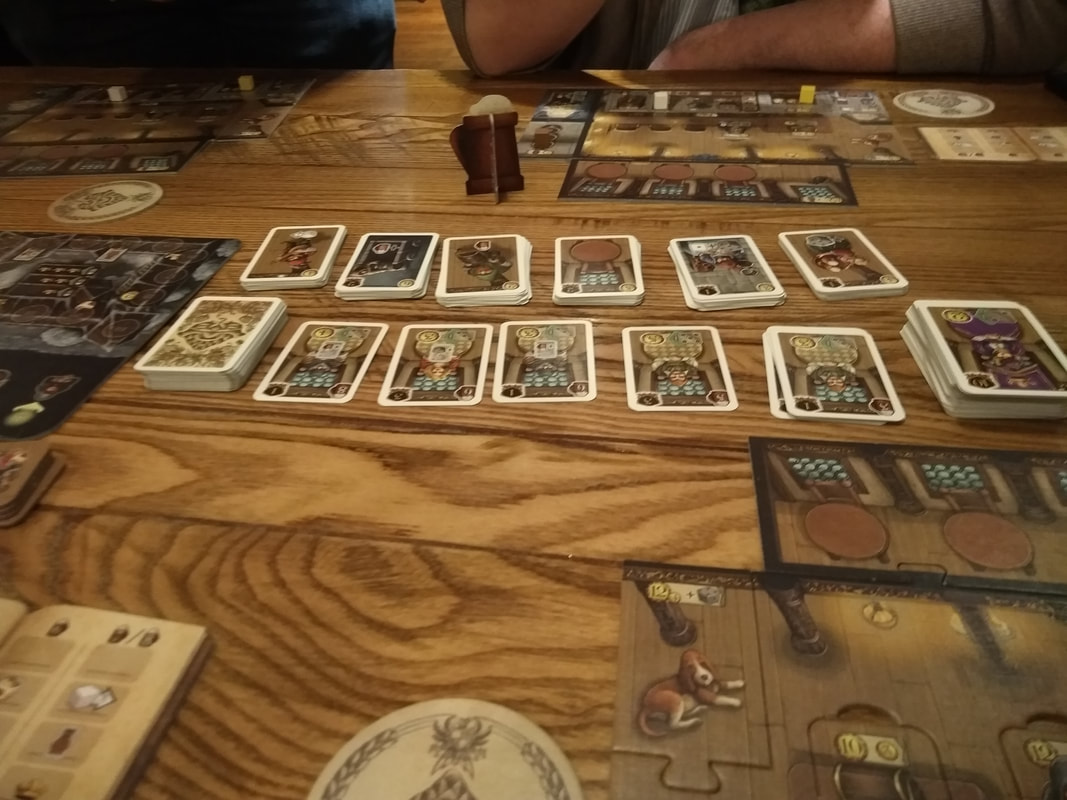
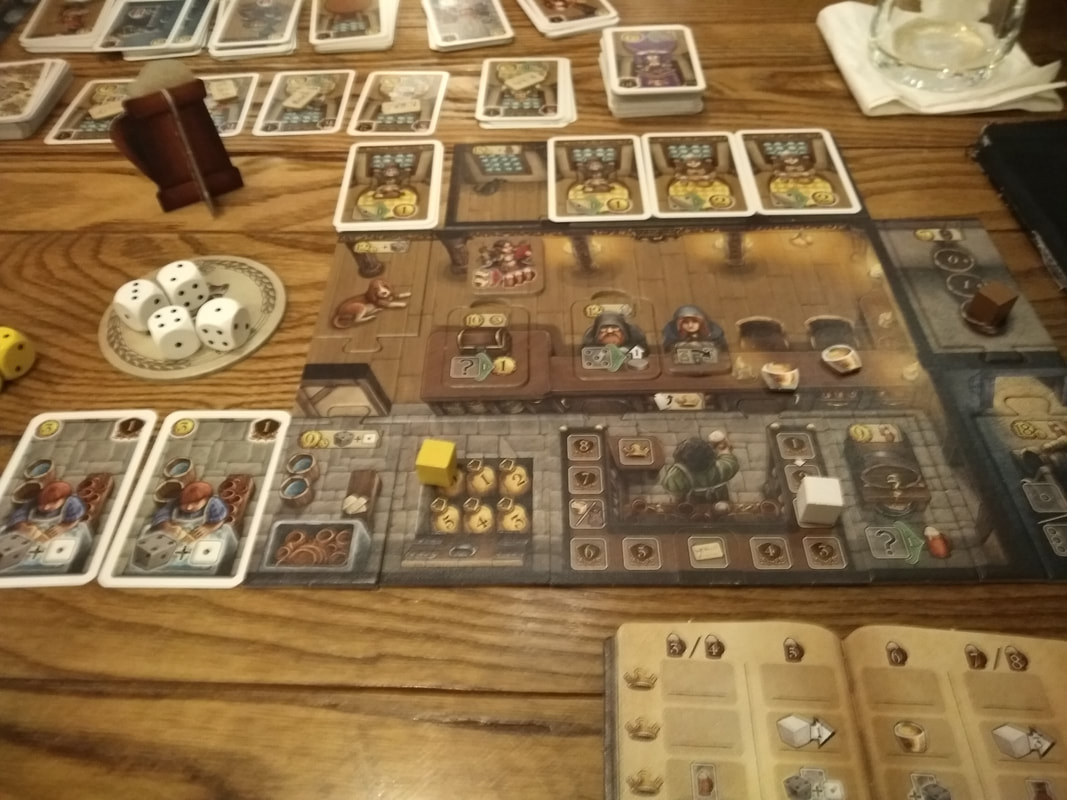
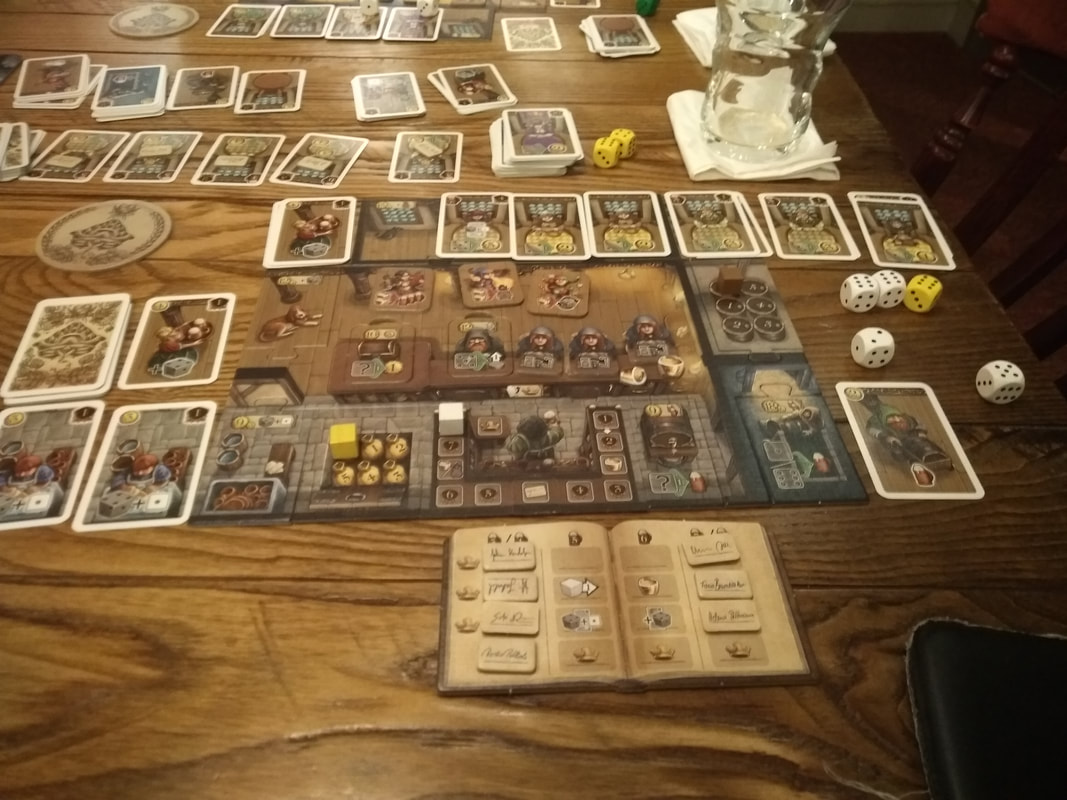
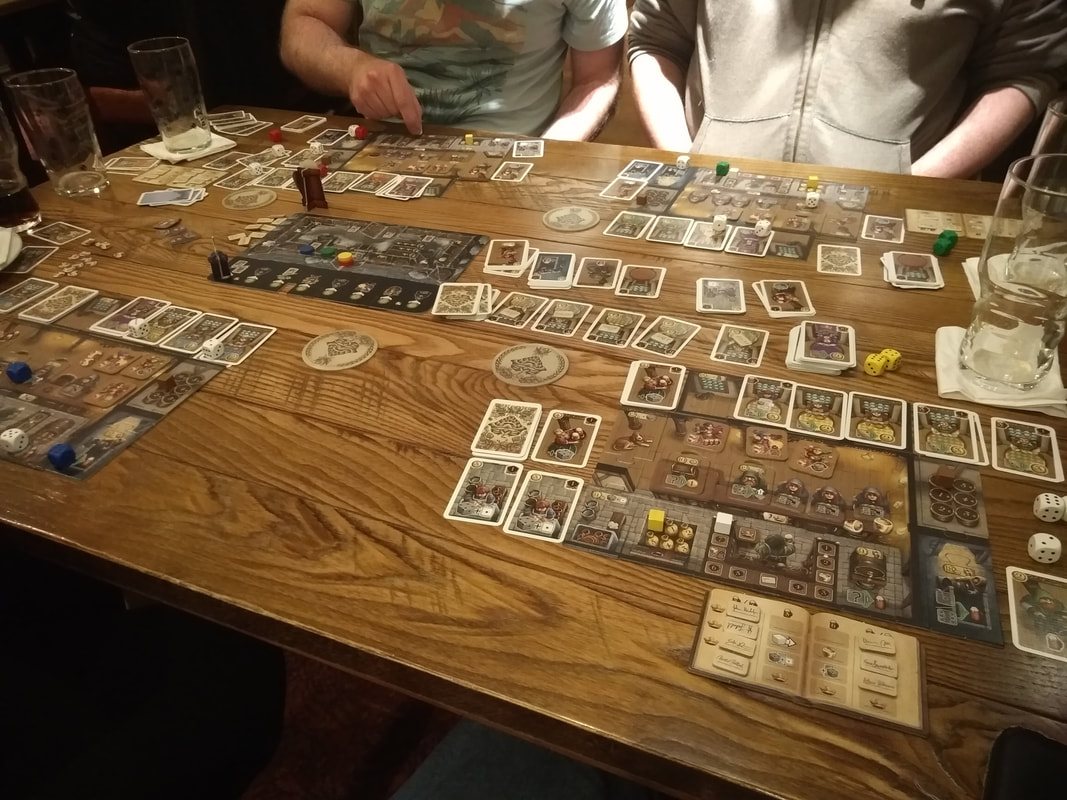
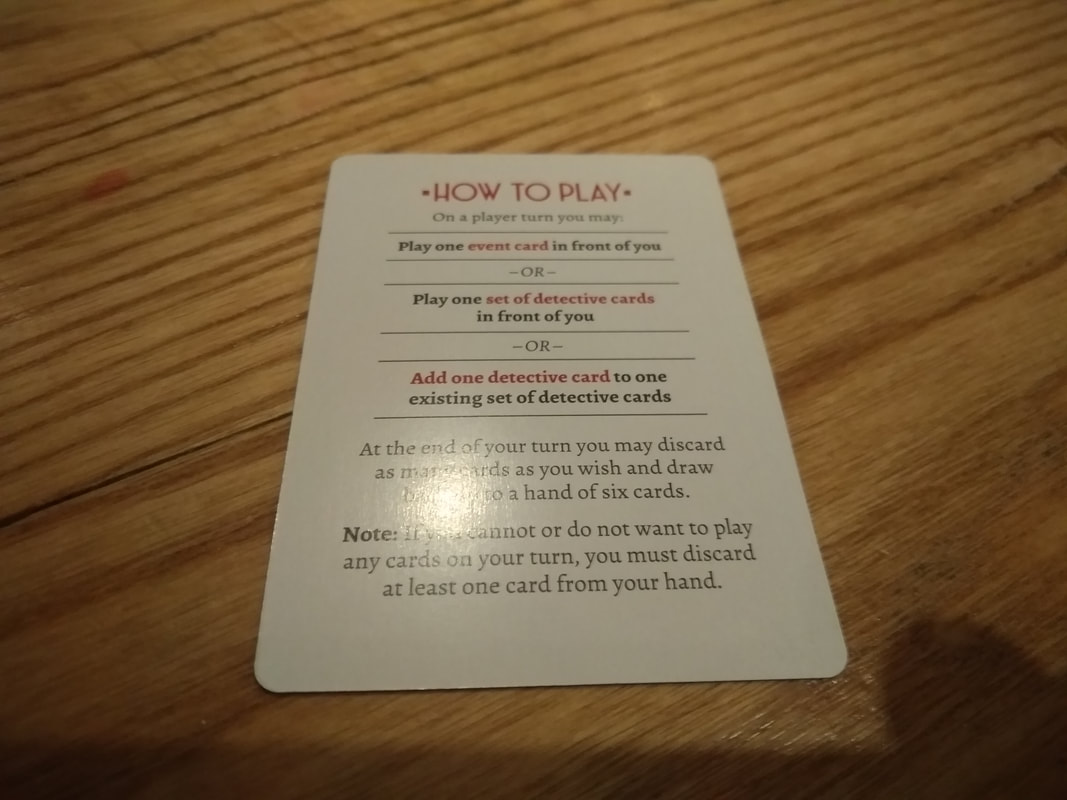
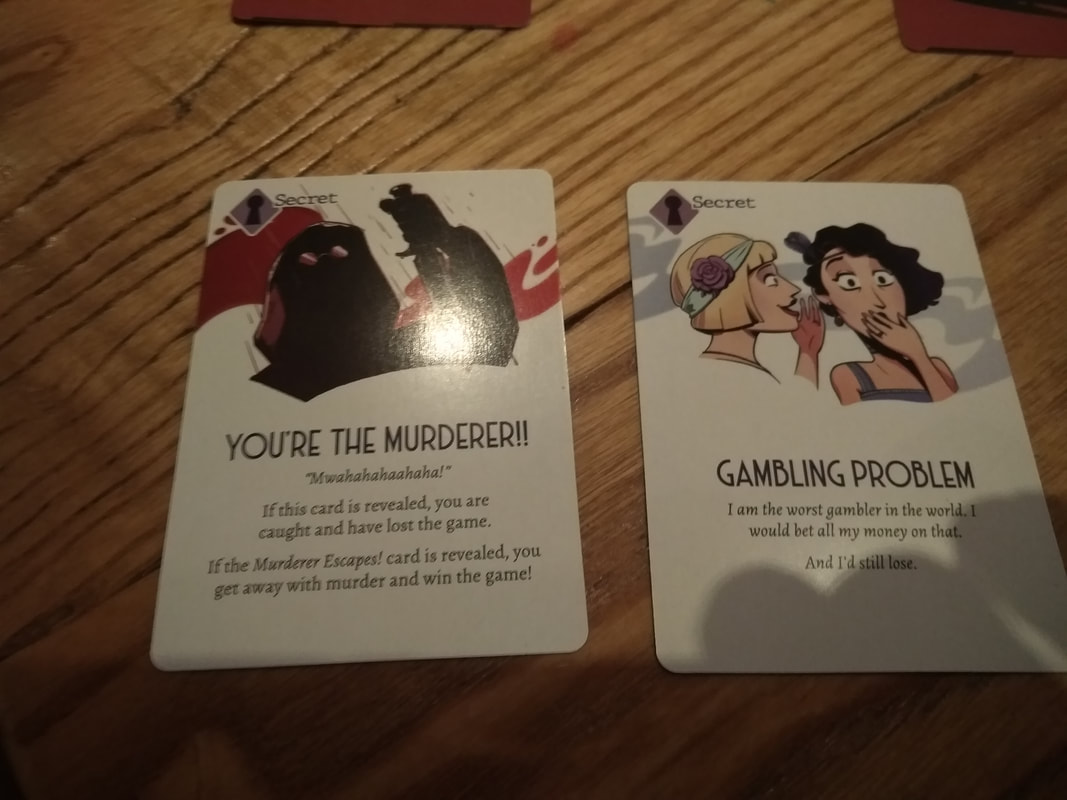
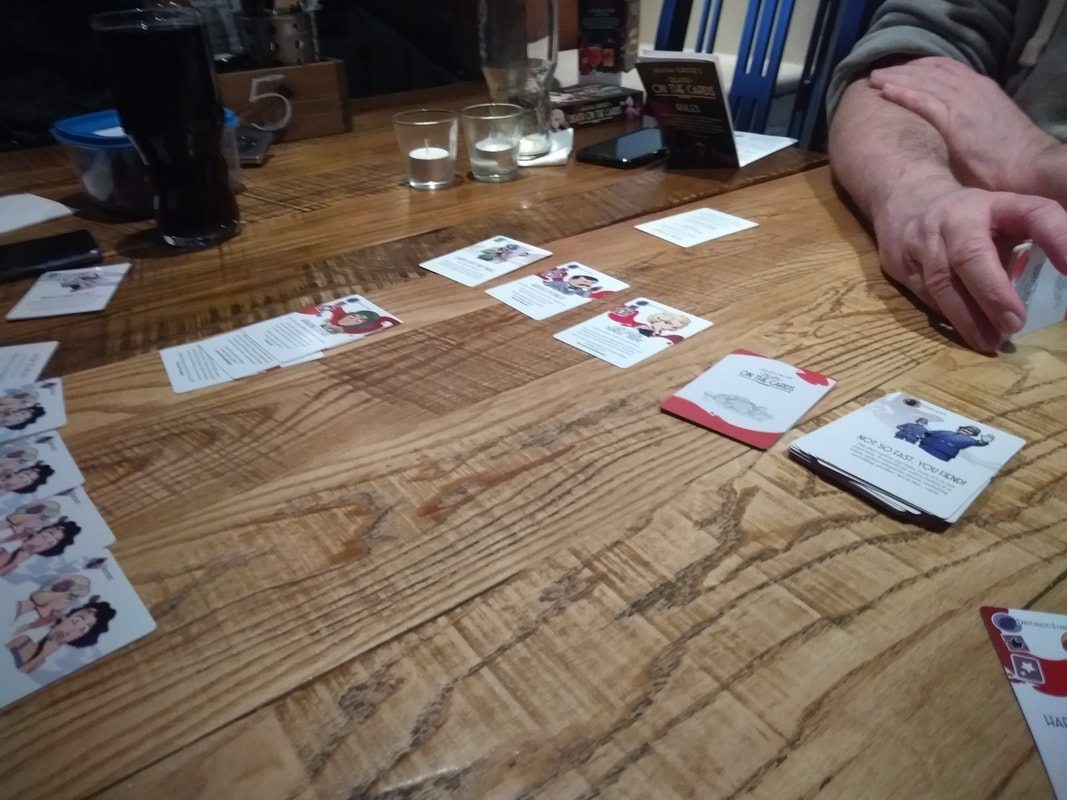
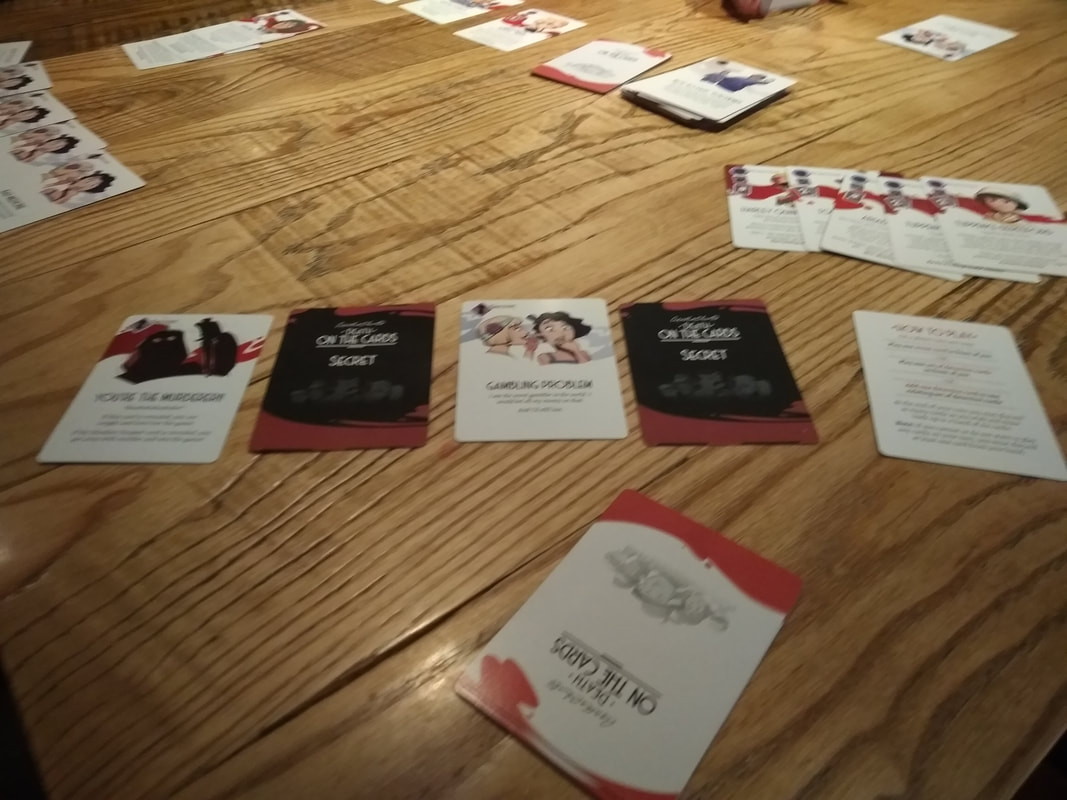
 RSS Feed
RSS Feed
